Buying the Best Leaf Blower
A leaf blower is a summer and fall staple for outdoor equipment. What if you don’t have one, though? What if you need a new one and don’t know which is best? Acme Tools always wants to help people do their best work, so get ready for the ultimate leaf blower buying guide.
The Types of Blower:
Each one is designed for a specific space in mind but serves the same function. All can blow leaves with no problem, but you may pick one over another if you desire a quieter machine. If you need something to handle a bigger yard or field, you may need something heavy-duty. A green person would also like to reuse leaves for mulch or compost. You can get a specific attachment for your blower to fit that need. There are three types of blowers that you can pick from; handheld, backpack, or walk-behind.
Handheld Leaf Blower:
For maneuverability and lightweight, this is perfect for porches, gazebos, and any small lawn. Lacks the power to blow large debris away but can handle light snow, dust, and sawdust without bogging down.
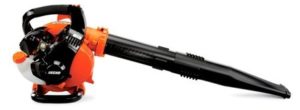
Backpack Leaf Blower:
If you need more power and longer run time, this is the blower you need to look at. Ideal for garages, large shops, and fields that have to cover a lot of ground. It can easily blow away wet leaves, twigs, pebbles, and metal shavings.
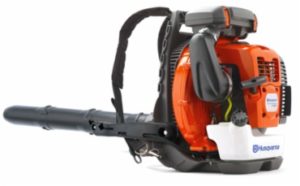
Walk Behind Leaf Blower:
The big guns are for jobs that need lots of power and are completed quickly. Walk Behind Blowers are what a professional crew would use as they can blow away leaves, heavy paper and cardboard, and other garbage left out on the ground.

Other Things You Should Consider When Buying a Leaf Blower
Leaf Blower Noise Level:
When you are looking at buying a new blower there a few things that you should consider. What you need to take note of is the power of the tool, the energy it uses: (gas, corded, or battery), and how much noise the tool makes.
The amount of noise a blower makes can influence what you are shopping for, and keep in mind who might have to hear you when you are working outside. For residential uses the quieter, the better, you do not want to have a problem with your neighbor complaining every time you are working on your lawn, cleaning out your gutter, or just blowing dust out of your garage. You also don’t want to wake up anyone in your house who could be sleeping and deal with the consequences. Here we have a link to decibel levels and their equivalents so that you can have a better idea of what the numbers mean. A good rule of thumb though electric equals quiet, gas equal loud, also the bigger the motor, the more noise it makes.
For most residential areas it doesn’t matter how loud it is until a specific time frame called “quiet hours.” Now depending on your state and city, these can vary, so it is always good to know when those hours are, especially if you are an early riser and likes to get things done as soon as possible.
Type of Power:
Power is important to your next purchase, but you want to find one that has a balance of two important things. The two things that you need to look at are the CFM (cubic-feet-per-minute) and MPH (miles-per-hour), are both high and are close together in value.
A mistake most first time buyers have thinking greater MPH will mean more power to push. Yes, the air will be coming out faster out of the barrel but the more leaves there are, the blower needs to do more work. With higher speed doesn’t mean there is more leaf blowing power, it just means air will be coming out faster. In a tube going an equivalent of 200 MPH, it doesn’t add to much work getting done. What you need to look at actually is CFM of the blower in addition to MPH.
CFM is the volume of air that flows out of the leaf blower’s tube in one minute. The number of CFM translates to how far the fan pushes the leaves in a specific area. However being able to push a lot of leaves in an area doesn’t add too much if it takes too long to do the job.
Both values are needed to get the job done as fast and efficient as possible. Too much speed and not enough covered area will mean spending more time pushing through the leaves. Covers a lot of space but does it slowly means you will be standing outside for a while.
Which Leaf Blower is Best for You?
As mentioned earlier in this post, each blower works the same but has an area and space in mind.
Small Jobs
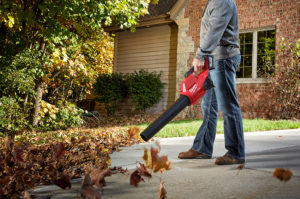
For a smaller yard or cleaning off a deck or patio, a handheld blower would be best. This tool is light and easy to store in a garage without taking up much space. Though this one is a bit weaker when it comes to power and how much work it can do.
Medium to Large Jobs
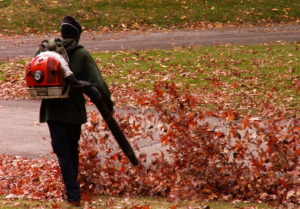
For larger yards and longer work times, the backpack blower would be your next choice. This blower is the best of both worlds as it does offer more power and run time but still has the mobility and comfort thanks to the straps. Though comfort is a relative term, it does make it easier than holding onto a six to ten lb. tool for over an hour. It can easily clear snow from your car and sidewalks after a massive storm.
Large and Professional Jobs
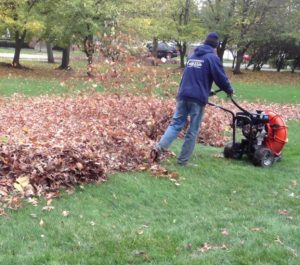
Finally the walk behind blower. This wheeled blower is best for bigger lawns and areas, like parks, farmland, or any backyard that is over 1 acre. A wheeled blower has the power that can send debris flying, so be sure that you have a clear area of people and animals. The wheeled blower doesn’t have the same mobility as the other two options but has movement nonetheless. With the wheels, it makes it easy to maneuver around an open space and makes quick work of large areas. You would see this in a park where a lot of leaves have fallen or maybe at a stadium after a big game to clear all the trash left over.
Leaf Blower Fuel Types:
Fuel for your machine is necessary, and knowing which one will fit your needs is crucial to making your decision. Three fuel types for blowers break down into Battery, Corded, and Gas. Each is useful and gets the job done, but one might be better suited depending on the job.
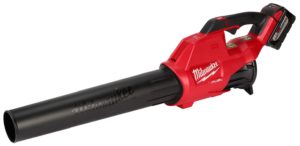
Battery:
For first-time owners and established brand fans, battery-operated is an option you should pursue. Brand fans would find it helpful to have a machine that already works on the tool batteries they already own. It can be pretty overwhelming if you have never owned a blower before and have not been around the gas and oil versions. The battery-operated option is as simple as clicking a battery into the tool and squeezing the trigger. Depending on the type you get, motor maintenance could be as little as non-existent or once in a while check-up. Handy for first-time users.
- Pros: User-friendly, Great for first-timers, can run on existing batteries for other tools.
- Cons: Limited run time
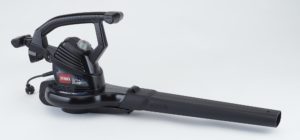
Corded:
If you do not own any battery brands and still want to go electric you can, with corded leaf blowers. Corded leaf blowers are a middle ground between electric and gas powered as you get more power than the battery and still don’t have to hassle with gas and oil. The drawback of this tool though is what makes it more powerful, and that would be the cord. Lightweight and maneuverable, it can get snagged and caught in the cord. The cord limits reach to how far you can go with the tool. For average yards with a fence, this can be perfect. Otherwise, you may need to look to something else.
- Pros: Has more power, light-weight.
- Cons: Limited distance, the wire gets in the way.
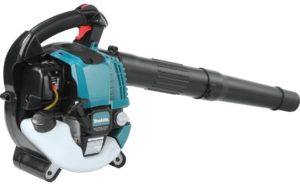
Gas:
Though stated several times before, gas and oil blowers can be intimidating, but if you have had one before or are ready to learn about them, this tool can be the most effective for cleaning the yard. This blower has the most power behind it on average but takes a lot of care to maintain, not to mention that it is the loudest compared to the others.
For gas and oil blowers, there is a ratio between how much oil and gas you need in the tank before starting. The oil in the gas is to help lubricate the engine while and after its use. This amount can change depending on how much your gas tank can hold, but the ratio will remain the same. Luckily, there is premixed fuel, so it can take a lot of guesswork out of mixing it yourself. Pure gas blowers exist as well and are as simple as they sound. Just fill the gas tank, close it, and you are ready.
- Pros: Powerful, long run-time
- Cons: Loud, Maintenance, Fuel Prices change.
Other Leaf Blower Features & Accessories:
There are accessories for leaf blowers like extensions, vacuum kits, variable blower head tips, gutter kits, and disposable leaf bags. So, depending on the time of year, you can pick this tool up to make the cleanup easy.
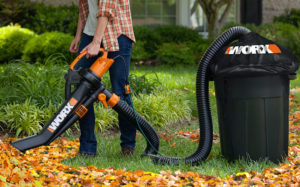
Some people like to repurpose their things and recycle their leaves into something for their lawn and garden. Well, some models have special attachments that turn their blowers into vacuums and mulchers. Handy when you want to reuse the material for a garden.
Not to mention, during light snow, you can use this to clear your front walkways instead of shoveling. Blowing snow away helps prevent ice from forming or having to bring out the snow plow or shovel. A leaf blower makes it quick and easy to work with light snow.
For other leaf blower uses, check out our blog post for Year-Round Leaf Blower Uses. It is a fun read and an excellent way to maximize the use of your leaf blower beyond just one season.
How to Maintain a Leaf Blower
Though a leaf blower’s uses vary during different seasons, it will most likely not see use, especially during the winter. You have to do a few things to protect your tool when you are not using it. If you are storing it in your garage or nearby, just run the tool once a month in a well-vented area, which will exercise the carburetor and the motor. If you plan on storing the leaf blower in a storage shed and have little access to it, here are a few tips to help winterize it.
- Fuel Stabilizer: This is for any fuel left in the tank. Just mix it into the fuel, then empty the fuel tank as best you can. The fuel stabilizer will give longevity to the fuel without it going bad.
- Run it: The stabilized fuel in the engine running allows it to coat the interior of the motor. Run it for two minutes or so and dump it into a container. (Make sure you pump it to get all you can if you have a primer bulb.)
- Restart the blower: Run the engine until it dies, removing any remaining fuel.
- Choke It (The Engine): It’s just a simple way of getting any last little drops of fuel left. When you finally cannot get it to start, the winterization of your blower is complete.
Conclusion:
Buying a leaf blower is a big purchase, and it should take some time and consideration. This breakdown of what you should look for is a great way to start, but if there is something that wasn’t mentioned, please let us know in the comment section down below. Use the buying guide to help pick out the best leaf blower for your needs, and share this with a friend or coworker who might find this helpful.
Check out our complete list of blowers at AcmeTools.com and follow our blog for more tool-buying guides and tool highlights. Acme Tools is here to help you Do Your Best Work.

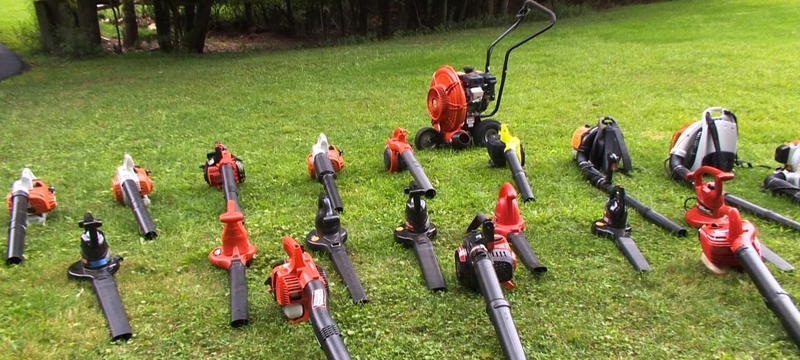
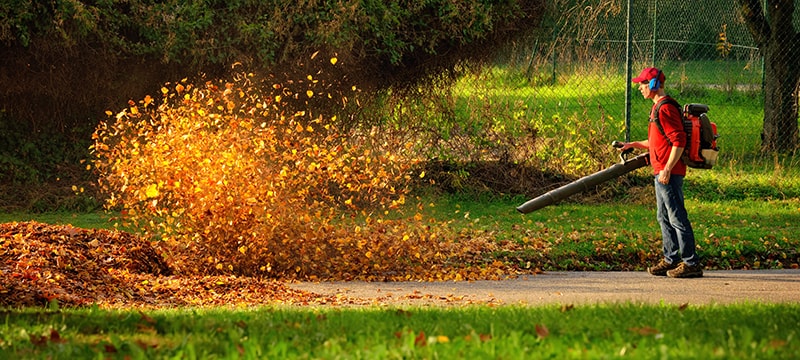
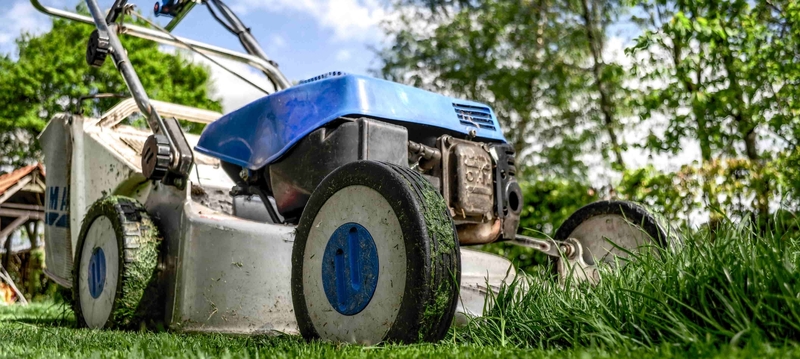
2 Comments
michael
July 8, 2019 at 1:21 pmInquiry who in the industry using quality wiring etc. it seems that they all appear somewhat the same. So who is making leaf blower battery powered; and the material that makes the motor run/ who is using the best copper wiring and etc. or is this just another case of all the competition saying mine is better cause mph/vol/etc. maybe it comes down to the battery itself. Are all batteries not the same?
Acme Tools
July 9, 2019 at 1:28 pmHello, Thank you for your comment and question. The quality of the windings and the amount of copper used for those winding is important. It is always best to look into all items that make up a tool. When it comes to batteries they are not all the same. The make up of the individual battery cells are just and unique as you and I. Each manufacturer will determine what is best for their tools based on the application of the tool/battery combination.
Thank you,
Acme Tools